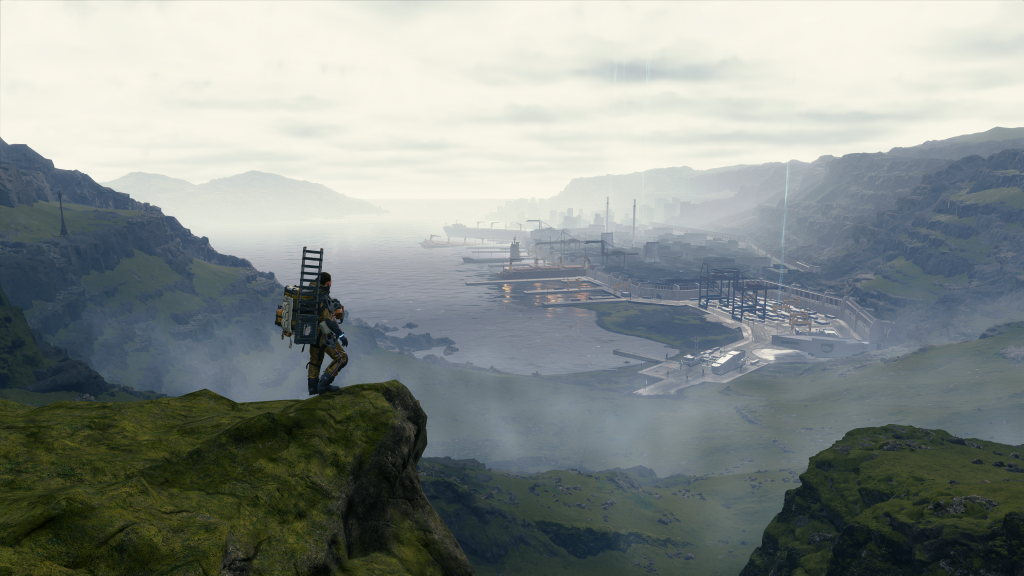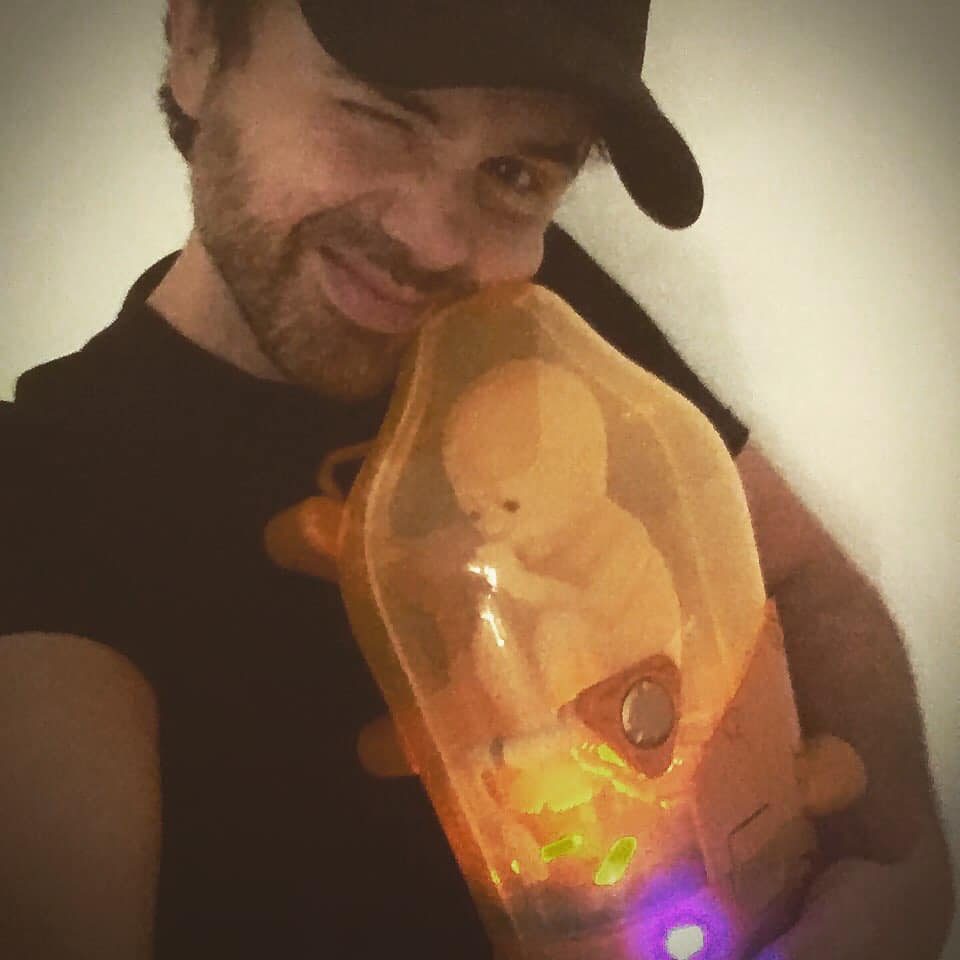
Sony’s original PlayStation marked the dawn of a new era for interactive media. The former industry giants of Sega and Nintendo had offered either quick arcade thrills grounded solely in pushing buttons to achieve a high score or cutesy cartoon adventures for kids, but the fifth console generation leap to 32-bit finally gave us games that could function as movies and none more so than Hideo Kojima’s ‘Metal Gear Solid’ (1998). Praised for its graphics and gameplay innovations, it interspersed stealth-based gameplay with extended blockbuster-style cinematics, using them to tell an off-beat story of high-tech espionage, which akin to the films of Paul Verhoeven, offered big-screen action and satirical/social commentary with an odd-ball, self-referential sense of humour. Take the game’s protagonist for instance, the ludicrously named ‘Solid Snake’ – on the surface a cool espionage agent, but at the same time a big cheesy nod to the character ‘Snake Pliskin’ as portrayed by Kurt Russell in John Carpenter’s 1981 action flick ‘Escape from New York’. Kojima would also subvert expectation by introducing bizarre forth wall breaking mechanics like a cybernetic ninja who would read your “mind” (i.e the contents of your PS memory card), using “telekinesis” to make things move (i.e the vibration on your controller) and could only be beaten when he could no longer know your next move (by plugging into the second control port).
The 2001 sequel ‘Metal Gear Solid 2: Sons of Liberty’ saw Kojima again breaking new ground in terms of enemy AI that would react to being held at gunpoint or if used as a human shield. Its biggest upset however was the bait and switch of introducing Snake at the start of the game, only for you to play the remainder of the game as a new character ‘Raiden’, with Snake only returning as an NPC wingman in the final act. Kojima explained that this switch in character perspective allowed you to appreciate Snake in the third person and feel the vulnerability when trying to walk in his footsteps.
The scariest story never to be told
By 2012 Kojima had come to be regarded as a god in the industry with his fifth instalment of the Metal Gear Series going into development. His publisher Konami assigned him to develop a new game to reboot the Silent Hill series which had seen a steady decline in sales and critical reception as it had been passed between Western developers who had struggled to grasp the source material. The title would star actor Norman Redus from the ‘Walking Dead’ series and set to co-direct was Mexican horror master Guillermo del Toro. Sadly, relations between Kojima and Konami collapsed with del Toro commenting:
“It’s not gonna happen and that breaks my greasy heart.”
Guillermo del Toro, 2016
All that was ever seen of ‘Silent Hills’ was a jaw-dropping trailer from the 2014 Tokyo Game Show (above) and a playable teaser called ‘P.T.’ which, even as a short demo, was regarded as one of the best horror titles of 2014, inspiring a new sub-genre of “walking horror” titles like the unreleased ‘Allison Road’, ‘Layers of Fear’ (2016) and ‘Visage’ (2021).
With the split from Konami, Kojima left behind Metal Gear, the series on which he’d built his career and with it the newly developed Fox Engine. ‘Silent Hills’ was officially dead and ‘P.T.’ would eventually be pulled down from the PlayStation Store. It was a sad time. But from these ashes would arise a phoenix.
Kojima put together his new Kojima Productions studio and set to work on a new title built from the DNA of Metal Gear and what Silent Hills could have been with both Norman Redus and Guillermo del Toro cast in lead roles. The title would feature supernatural worlds colliding with reality, which is a central theme of Silent Hill as well as exploring life, death and their interconnections. Eventually, a whole host of big-name actors were signed onto the project including Mads Mikkelsen, Léa Seydoux and Margaret Qualley.
What is this game?
The first the public saw of the game was the 2016 E3 reveal trailer (above) that saw Norman Redus’ character lying naked on an oily beach covered in stranded sea life with a newly born baby to which he was umbilically connected as oily handprints appear in the sand and on his body before the baby vanishes and figures are seen floating in the sky. No one had a clue what this was. The following teaser trailers were breathtaking, again showing a strange futuristic world of supernatural entities and surreal time distortions. Kojima talked about it centring around an idea of ropes and sticks – of building connections and keeping dangers at a distance, but what was the game? The first that anyone got to see was the 2019 gameplay trailer. It appeared to be an open-world game where you deliver cargo to depots spread around a sweeping, desolate landscape. Audiences were baffled.
The Death Stranding
The Death Stranding is a pre-destined global extinction event where the world of the dead has crossed into or become “stranded” in the world of the living. According to the lore, life is made of matter and death is made of anti-matter, so whenever dead and living entities come in contact with each other it causes enormous antimatter explosions called a “voidout” and these have devastated humanity. You play as Sam Bridges, a “Porter”, whose task it is to reconnect the world to a global network by travelling across America, delivering cargo to remote settlements and adding them to a network built from life/death based technology. And that aint even the half of it.
Knowing that this thing had come from Kojima and Silent Hill DNA, I had already decided that I was going to love it when I picked it up on November 8th 2019. The opening cinematics blew my mind as we see Sam and a team of body disposal operatives attacked by unseen supernatural beings, eventually resulting in a city-destroying voidout. You are eventually introduced to some of the bizarrely named characters like “Fragile”, “Strand”, “Bridges”, “Deadman” and Die-Hardman” before setting off on your first order which is to take the recently deceased President’s body to a crematorium.
You step beyond the perimeter of the Capital Knot City compound with the dead body strapped to a seat on your back, you see this Icelandic-looking, rocky mountain valley sweeping off into the distance and the sombre music of the band Low Roar starts to play. At this moment Death Stranding shows all of its cards without needing to say a thing. The visuals are breathtaking, arguably a swan-song of the PS4, but at the same time tinged with the bizarre as you see Sam slowly orientate towards delivering his bizarre cargo. The melancholic music that plays over these opening sequences is unlike anything in games before. The convention had generally been for generic Hollywood blockbuster-style music, not slow and sombre electronic post-rock. Also on the audio front, the sound design is second to none with all the high-tech gizmos making satisfying chatters and chimes, often ironically chirpy and upbeat given the contect, whilst every step and splash sound immerses you ever deeper into the world.
Making a connection
Whenever I get into a discussion of what Death Stranding is about, I always say the same thing – it is about connection. At every level, there is something that involves connections and connecting you to the experience. The characters are called things like “Strand” and Bridges” (all things related to connection), the ultimate aim of the game is to reconnect America, the music connects you to the emotions, the sound design gives tactility and the gameplay requires you to load cargo onto your back, plot a route, scan the terrain and carefully balance each step so that you feel everything. Even environmental conditions play a part as you need to seek shelter from the acid rain-like “timefall” which ages and deteriorates anything it touches.
A unique design feature that Death Stranding pioneers is the “bridge link”, where players are connected to each other’s game invisibly. Whilst you can’t see each other you can call out into the ether and hear others callback, although some of the structures they build like bridges and roads can populate your world and vice versa. What is so innovative about this is that where multiplayer gaming is synonymous with trolling and abusive behaviour, Death Stranding’s bridge link system of asynchronous multiplayer gameplay means that your interactions can only be positive. You can help other players by delivering their lost cargo and give their structures social media style “likes”, and it does have an effect. After a while of giving and receiving likes and gratitude, you actually start to feel like a good person and that you are helping. It gives you a strange extra motivation to press on.
It’s worth pointing out that Death Stranding’s release coincided with the Covid-19 pandemic, and in fact, the game almost predicts it as the gameplay loop sees Sam Bridges (a deliverer or “Porter” who is allergic to physical contact), deliver cargo to remote depots and shelters to people who are unable to go out due to the threat of timefall and looming death.
I also want to mention the game’s controls. Using one controller you fire weapons, climb mountains, fist fight, build structures, rock a baby, hold your breath and take wee-wees with the controller feeling like an extension of your body the entire time. It’s like your hands have been plunged into the tech of this world. A common put-down from detractors is that it is a “walking simulator”, like all you do is push a stick and move, but in actual fact the complexity and tactility of Death Stranding is astounding.

It’s a bridge baby, it spots ghosts
Death Stranding does something miraculous – it makes guys care about babies. At the start of the story where you deliver the president’s body to the crematorium, you are also tasked with incinerating a defective BB unit. A BB (Bridge Baby) unit is a live fetus taken from the womb of a brain-dead mother and placed in an artificial womb that is strapped to an operative’s belly and jacked into their body via an artificial umbilical-type link. Their connection between the worlds of life and death gives the BBs the ability to sense nearby entities from the world of the dead that have become stranded in the world of the living, making them essentially ghost spotters. BB becomes your little buddy as the two of you set out to reconnect the world to a global network with BB laughing and sometimes crying requiring you to gently rock your controller to soothe it.
There is a section mid-game where you are separated from BB and as with the removal of Snake in Metal Gear Solid 2, it has you genuinely appreciate them by their absence, leaving you missing your little friend and feeling incredibly vulnerable without their safety warning. The very final order features a sequence (that I will not spoil), which was the focus of a commercial for the game in how it can move you to tears giving a huge emotional payoff to the relationship you form.
Asylums for the Feeling
The greatest success a film/story/song/artwork can achieve is to move you. Something that stays with you long after the credits have rolled. A feeling that sticks in your mind days, weeks, years after and Death Stranding has one in particular…
In the early part of the story, you’re assigned your biggest order up to that point – to carry the heaviest cargo over a mountain and deliver it to a port at the far end of the map. So you load your cargo carefully to ensure it’s balanced, set your route on the map and head off. As you begin to ascend a rocky pass up the mountain a heavy torrent of timefall starts to rain down from above and your BB unit alerts you that you are surrounded by death entities. You hold your breath so they can’t hear you and carefully choose each step, weaving between rocks, all within grabbing distance of these malevolent entities as you make your slow and laboured ascent. Then finally, as you reach the summit, the entities fade away, the rain stops, the skies clear, you look down to see Port Knot and the song “Asylums for the Feelings” kicks in. You hear the wind rising up and over the mountain, you breathe and all at once you’re filled with relief to see your destination waiting for you in the distance, but also sadness for solitude and the void of life that the Death Stranding has created. A truly profound moment.
Music plays a hugely important part in this moment and throughout Death Stranding. In many ways, this was as much a musical listen experience as anything else. It introduced me to the music of Icelandic group Low Roar who immediately became one of my favourite bands. The original score by Ludvig Forssell is as beautiful as it is terrifying, featuring the epic futuristic lullaby “BB’s Theme”. There is also the “Timefall” album which is a collection of original songs written for the game though not included in the score but rather tracks that you can set to play aloud from structures within the game world. Notable tracks are Chvrches’ “Death Stranding” a hands-in-the-air pop song over cybernetic clicks from the game’s world; Bring Me the Horizon’s “Ludens” an emo rock number that dials deep into the connection themes of the game; Au/Ra & Alan Walker’s “Ghost” which acts like a quirky theme for Léa Seydoux’s character ‘Fragile’, and to mention them again Low Roar’s “Anything You Need” just sounds incredible blasting out of a structure with every chime echoing down a huge snow-capped mountain.
The Art of Death Stranding
When visuals are talked about in games it’s usually in reference to technical stuff like frame rates, resolutions or ray-tracing. Whilst Death Stranding was a definite final system pusher for the technology of the PS4, what it achieves in art design is stunning. It’s like “Tron” or “The Matrix” meets “The Revenant”. The costume design draws from both mundane functional wear like mail deliverer’s uniforms, the sherpas of the Himalayas, bikers’ leathers and mountain climbing gear to more out-there and exotic references like Egyptian Pharoe robes and Mary Poppin’s umbrella, reimagined in futuristic tactile materials. The otherworldly elements also have a very unique look with supernatural entities reaching out from a black tar, golden hand-shaped, crystalline structures made from mineralised death and hulking monsters with golden death masks. In order to platinum the game you must collect a library of memory chips that are scattered across the world with each one giving an insight into how deep Kojima went with his creative R&D.

Ya feel me? Just wow!
Death Stranding is often described as divisive in terms of its reception. Standard gamers couldn’t get their heads around a game for which the central gameplay loop is delivering cargo, but to them I say, ya just don’t get it. This is not a game about high scores, in fact, it almost satirises that with how over-generously it rewards you. Kojima’s intention was never to make “the next this…” or “another that…”, he wanted to create something new and innovate and by god did he succeed.
I can talk about the elements of world-building, game design, music, art design and just those crazy moments where you’re grabbed by a group of ghosts, dragged through the ground to attempt a stand-off against an oily golden masked lion armed with an arsenal of blood grenades only to be swallowed and witness a gobsmacking “void out” which leaves a nuclear crater in its wake… but it just doesn’t do it justice.
I spent over 300 hours in this world and still didn’t want to leave. It is a profound work of art that far eclipses anything to come out of cinema or Netflix in the past decade in my opinion. And whilst a sequel and live-action movie are in the works, that moment of playing this in 2019-2020 was a once-in-a-lifetime thing.
